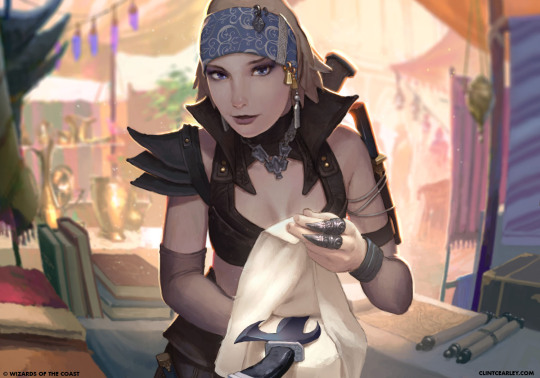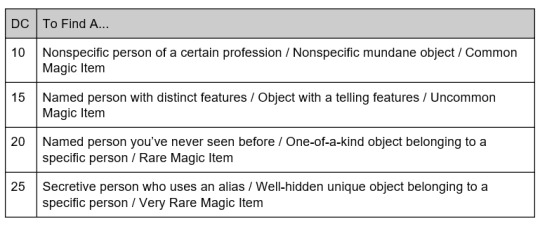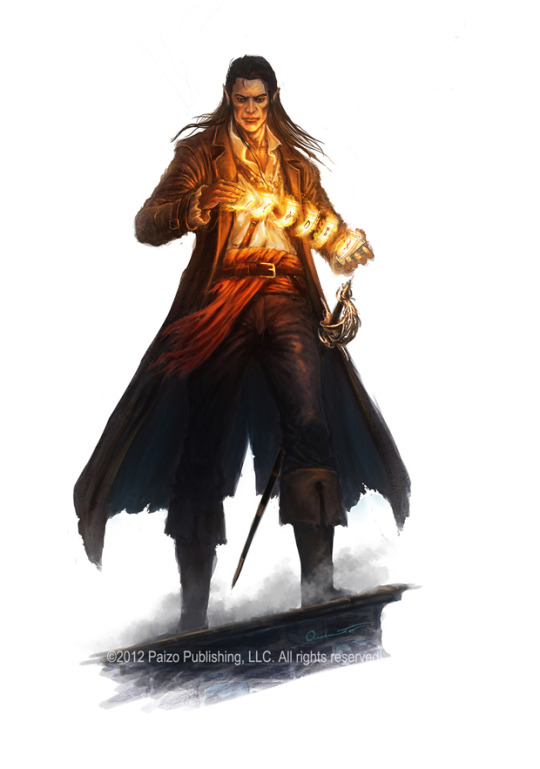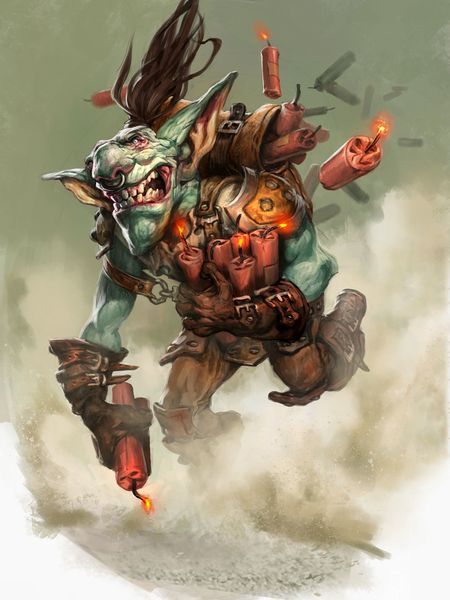#then jesper and kit are having a blast
Text
Kit's "Slay today" vs Jack's "All mourners. All funerals" when asked to come up with a new motto for the crows is so "I'm not big on killing unconscious men" "We could wake them up" of them
#wylan and jack go a bit darker sometimes#then jesper and kit are having a blast#slay today is my new life motto#wesper#jesper fahey#wylan hendriks#shadow and bone#six of crows#grishaverse#shadow and bone season 2#crooked kingdom#ruin and rising#siege and storm#wylan van eck#wylan fahey
1K notes
·
View notes
Text

I came to the Shadow and Bone fandom rather late. I was watching Season 1 and was completely captivated by Jesper, especially the scene where he lies about bouncing for the Clipper and shoots the signs. I had been looking for inspiration for my next D&D character and my bard-warlock Arlan was born in that moment, who fakes shooting with his Eldritch Blasts, lying because his brand of magic isn't exactly approved by those in power. At the time, I didn't know that Jesper was Grisha; Arlan was more like Jesper than I had originally anticipated. I've been playing Arlan now for two years and during that time I've dug more and more into Jesper's character and it's just made me love him all the more.

One of the things bards can do is give Bardic Inspirations to other players - so it was incredibly special to have Kit Young sign the Arlan/Jesper art I had commissioned from @cilyra and give me my own Bardic Inspiration from him.

Shadow and Bone brought me to tumblr because I was looking for artists who could draw Arlan/Jesper and I found so much more. I wasn't expecting to find a welcoming and thoughtful fandom community. I've dug into the books. I've gotten spectacular art from several artists via tumblr and IG.
I've loved reading the fanfics and the thoughtful analysis (@she-posts-nerdy-stuff has some great think pieces) which have made the source material so much richer, seeing uploads from the gif makers (shout out to @thewalkingbucky) to help me get through my days, and just interacting with other fans. I was fortunate enough to meet some of them in Germany at MagicCon (and share in a group hug with Kit).

(Photo by A. Jansen)
The Grishaverse is the first fandom in years and years that I've let myself really grasp, unabashedly, whole-heartedly, openly. I've always felt a little embarrassed with my little blorbo hyperfixations but something about Shadow and Bone community has made me say who cares what other people think? I love what I love and I want to fully experience it all; it's made my life that much fuller. It's made me realize that I should just embrace my interests and what gives me joy, and fuck the haters and fuck the cynics.
So while it is disappointing that Netflix has cancelled not just Season 3 but also the Six of Crows spinoff, I hope we'll still maintain the thriving community and have future cons to meet the cast and each other!
#six of crows#jesper fahey#grishaverse#shadow and bone#kit young#shadow and bone season 3#soc spinoff#shadow and bone season 2#shadow and bone netflix#soc netflix#six of crows spin off#leigh bardugo#magiccon#no mourners no funerals#nmnf
36 notes
·
View notes
Text
Rogue Week: New Roguish Archetypes
Four new homebrew roguish archetypes for the D&D 5e rogue: the Shady Dealer, the Gambler, the Firebug, and the Grave Robber!

image credit: Clint Cearley
Shady Dealer
The ultimate intrigue character, the Shady Dealer is a smuggler of a thieves guild or a black market merchant. They use their connections to get information to the adventuring group far easier than anyone else. They know who to talk to and can get just about anything that the party is looking for... as long as the price is right.
Their ability to essentially cast a stronger version of Locate Object and Locate Person is useful for most narratives and their ability to cast Identify on objects they appraise is noteworthy for any adventuring party. The class is far from combat-oriented but they have a strength in their ability to access the best poisons for cheap. A player will get the most out of this class in abusing their Merchant's Knowledge abilities to make money to buy better poisons and buy the specific magic items they want.
Tools of the Trade: At 3rd level, you gain proficiency in the Disguise Kit, Forgery Kit, and Poisoner's Kit.
Merchant's Knowledge: At 3rd level, you trade in the most valuable commodity of all: information. You gain access to a handful of abilities.
Appraise: You have advantage on checks made to judge an item's worth. If you successfully determine how much an item is worth, you may also learn its magical properties as if you had cast an Identify spell on it.
Informants: In a populated area there is bound to be somebody who knows something. As long as you are in a town or city, you may add your CHA modifier to INT checks. You must spend 1d4 hours gathering.
Locate Person/Object: You can find out the location of a specific person or a object using your ties to the criminal underbelly. As long as you are in a town or city, you may make a Persuasion or Intimidation check against a DC based on the description of the target person or object (See below). If you succeed, you find out the current location of the target if the target is within the town or city. If the target is not in the current city, you discover where the target was headed when they last left the city, if possible. You must spend 8 hours to find any specific object or person.

Death Dealer: At 9th level, you have honed your abilities and knowledge of the best weapon for your profession: poison. When you use a poison, you increase all saving throw DCs of the poison by 1 and reroll 1s and 2s on damage dice of your poisons. You may buy poisons for half of their market price.
Use Magic Device: By 13th level, you have learned enough about the workings of magic that you can improvise the use of items even when they are not intended for you. You ignore all class, race, and level requirements on the use of magic items.
Soul of Deceit: Starting at 17th level, your thoughts can’t be read by telepathy or other means, unless you allow it. You can present false thoughts by making a CHA check contested by the mind reader’s WIS check. Additionally, no matter what you say, magic that would determine if you are telling the truth indicates you are being truthful, if you so choose, and you can’t be compelled to tell the truth by magic.

image credit: Maichol Quinto (Satibalzane)
Gambler
The gambler is a character that is constantly pushing their luck to its limits. Some postulate it must be some sort of magic or trickery, but only the gambler knows for certain why they always end up ahead: a deal with Tymora, the goddess of luck herself!
I wanted this class to really feel like you are gambling when you play, so I made the key ability (Risky Action) enable your sneak attack (even on opportunity attacks since it lasts until your next turn!) so players would be tempted to use it often. Risky Action feels like gambling because you are literally playing Craps every time you play!
The immense variety of their spell list is balanced by only getting one each day (twice at 17th level) and completely at random to prevent planning. I think this will be enjoyable to improvise their day around a spell or two. I picked the spells in the deck of cards according to their suite and value. Clubs="Elemental" spells, Spade="Utility" spells, Diamond="Trickery" spells, and Heart=Healing spells, while the value equates to the spell level.
Also note that I made a homebrew magic item for Rogue Week called a Lucky Charm that works well with this class as it gives them an additional luck point.
Risky Action: At 3rd level, you can use your Cunning Action to take a risk during combat. Pick a number from 2 to 12 except for the number 7 and roll 2d6. If the result is a 7, you have disadvantage on all attack rolls made until your next turn. If the result is anything other than 7, you gain advantage on all attack rolls until your next turn. If the result is the number you chose when you rolled the dice, you can steal a tiny object (less than a pound) from the next creature you hit with an attack that isn't currently held by the creature. For instance: a piece of jewelry, a small coinpurse, a scroll, a belt, a stowed dagger, or similar object.
Lucky: At 3rd level, you gain the Lucky feat. If you already have the Lucky feat, you instead gain one additional daily luck point. You also gain proficiency in a gaming set of your choice.
Up the Ante: Starting at 9th level whenever you spend a luck point you may choose one of the following:
Gambler's Conceit: You gain +10 temporary HP until your next turn.
Gambler's Ruin: Attacks you make deal +2d6 damage until your next turn.
Inconceivable: You may force a creature that can see you within 10 ft. to make a CHA saving throw with a DC equal to 10 + 2d6. On a failed save, the creature becomes stunned until your next turn.
Luck of the Draw: Once per day starting at 13th level, you may draw a card from a magic deck of cards granted to you by the goddess of luck (or roll 1d20). You gain a spell corresponding to the card drawn as shown below. You may cast the spell once within the next 24 hours. Any spell cast this way is treated as if you cast it using a 5th level spell slot. Use your CHA modifier as your key ability modifier for your spell save DC and spell attack modifiers. At 17th level, you may draw two cards from the deck each day.
1: Two of Spades: Feather Fall
2: Two of Diamonds: Charm Person
3: Two of Clubs: Thunder Wave
4: Two of Hearts: Healing Word
5: Jack of Spades: Spider Climb
6: Jack of Diamonds: Invisibility
7: Jack of Clubs: Scorching Ray
8: Jack of Hearts: Prayer of Healing
9: Queen of Spades: Blink
10: Queen of Diamonds: Hypnotic Pattern
11: Queen of Clubs: Stinking Cloud
12: Queen of Hearts: Mass Healing Word
13: King of Spades: Dimension Door
14: King of Diamonds: Greater Invisibility
15: King of Clubs: Stoneskin
16: King of Hearts: Death Ward
17: Ace of Spades: Passwall
18: Ace of Diamonds: Dominate Person
19: Ace of Clubs: Cone of Cold
20: Ace of Hearts: Mass Cure Wounds
Lucky Break: At 17th level, you can use your reaction and spend a luck point to gain immunity to all forms of damage until your next turn.

image credit: Jesper Ejsing
Firebug
The Firebug is a rogue that delights in fire and explosions. They use their abilities and prowess to get the drop on their victims like no other rogue can. Their bombs surprise their foes and cause panic and mayhem while the firebug wades into the chaos to backstab them.
While the Fire and Smoke Bombs are technically spells, if your DM allows or prefers they can have them not count as casting a spell but instead as throwing a fist-sized bomb at the targeted location. I could have made this class all about the explosives in the back of the DMG, but I thought it would be more interesting (and more versatile) to make the effects more spell-like.
Fire and Smoke Bombs: At 3rd level you learn how to easily create bombs out of either alchemical or magical material. You learn the Create Bonfire (EE) and Produce Flame cantrips gain three spell slots which replenish after a long rest. Each spell slot level is equal to half your rogue level rounded up. You can cast the following spells using your spell slots (provided the spell slot is high enough):
Fog Cloud (1st)
Pyrotechnics (EE) (2nd)
Fireball (3rd)
Delayed Blast Fireball (7th)
Shock: At 3rd level, whenever a creature must make a saving throw against your Firebug spells, if that creature is surprised, the creature has disadvantage on their saving throw.
Commando's Vision: At 9th level, you gain the ability to see through smoke, fire, and fog without any penalty.
Awe: At 13th level, whenever a creature must make a saving throw against your Fire and Smoke Bombs, if that creature is surprised, the creature becomes frightened for the duration of their next round and deafened for 1d4 rounds.
Undermine: At 17th level, your Fireball and Delayed Blast Fireball spells deal an equal amount of damage as force damage to structures in their area.

image credit: Felicia Cano
Grave Robber
The grave robber has lived on the fringes of society and among the dead. This roguish character is often paid to find corpses for necromancers and less-than-ethical surgeons. Soon, they found that the dead hold their own secrets and riches. The grave robber uses their expertise of tomb raiding and their knowledge from their arcane and medical patrons to assist their adventuring party with quasi-magical poisons. Most good characters will be hesitant to work with such a rogue of such a grisly profession, but they won’t be complaining once their life is saved by Ghoul Ichor!
I wanted to have unique poisons for each type of undead for the Waste Not ability but besides the ghoul they all do the same thing: reduce max HP with necrotic damage. This was incredibly boring so I looked back at 3rd edition for inspiration. This class is resilient and ruthless. They don’t get their important combat boost until much later in the progression, but their access to essentially free poison each day can take down the most powerful enemies.
Tomb Raider: By 3rd level, you have become familiar with a variety of faiths and learn how to notice the magical defenses they set for their sacred dead. You gain proficiency in the Religion skill and can cast Detect Magic at will.
Waste Not: Starting at 3rd level, you use knowledge gathered from undead you've encountered to make unique alchemical poisons out of the corpses you plunder. You can prepare one dose from the listed poisons below for every 2 hours you spend with a corpse (provided you meet the level requirements for the poison). A maximum of two doses can be harvested from any one corpse before it is wasted of usefulness. The saving throws for each of these are equal to 8 + your INT modifier + your proficiency modifier.
Ghoul Ichor (Level 3): You may use a bonus action to coat your weapon in Ghoul Ichor. If the next creature you hit with that weapon within 1 hour is not an elf or an undead, the creature must succeed at a CON saving throw or become paralyzed for 1 minute. The creature may repeat the saving throw at the start of each of its turns, ending the effect on itself on a success.
Wight Blood (Level 3): You may use a bonus action to coat your weapon in Wight Blood. The next non-undead creature you hit with that weapon within 1 hour must succeed at a CON saving throw or gain one level of exhaustion. The affected creature repeats the save at the end of its next turn, gaining one additional level of exhaustion on a failed save.
Vampire Blight (Level 6): You may use a bonus action to coat your weapon in Vampire Blight. The next creature you hit with your weapon must succeed at a CON saving throw or take 6d6 necrotic damage (half damage on a successful save). The creature's maximum hit points are reduced by an amount equal to the damage dealt.
Mummy Powder (Level 9): You may throw a glass vial of Mummy Powder at a creature up to 20 ft. away or you can coat a Tiny object in the powder. A creature that comes into contact with the powder must succeed at a CON saving throw or become cursed with Mummy Rot. A creature cursed this way takes 3d6 necrotic damage immediately and again every 24 hours thereafter. The creature's maximum hit points are reduced by the same amount of damage dealt. Mummy Rot can only be cured by a Remove Curse or similar effect.
Bodak Eye (Level 13): Although not technically a poison, the Bodak Eye can be pointed at a creature within 30 ft. If the creature can see the Bodak Eye, the creature must make a CON saving throw. If the creature fails the saving throw, they take 10d6 necrotic damage. If the creature fails their save by 5 or more, the creature instead dies instantly. The Bodak Eye loses its effectiveness once used.
Night Moves: At 9th level, you are accustomed to working in pitch darkness. You gain Darkvision out to 30 ft. If you already have Darkvision, your existing range for your Darkvision increases by 30 ft. In addition, you can move at a normal speed while moving stealthily (normally you must move at 2/3 your regular speed to maintain stealth).
Grave Fortitude: At 13th level, your grim work has made you accustomed to the threats of death and disease. You gain advantage on saving throws against spells and effects that deal poison or necrotic damage or inflict disease.
Bury Them: At 17th level, you become accustomed to having the upper hand and are desperate to keep it that way. If you hit with an attack against a prone creature the attack automatically counts as a critical hit.
#D&D 5e#Rogue Week#homebrew class#Gambler#rogue#roguish archetypes#subclass#D&D#DnD#Dungeons and Dragons#grave robber#firebug#bomber#sapper#black market merchant#shady dealer#poisoner#thief#assassin
784 notes
·
View notes
Link

Netflix's Shadow & Bone series, based on the bestselling books by Leigh Bardugo, has a rich mythology and vibrant characters; here it all is explained. The gritty, dark fantasy Netflix series was first announced in January 2019 with Eric Heisserer (Arrival) serving as showrunner, creator and executive producer, with Bardugo herself also serving as EP on the series, guaranteeing it will stay faithful to the spirit of the books.
Bardugo's series of novels has earned itself a large and faithful following thanks to their intricate world-building, an interesting system of magic, and unforgettable characters. The scope of the new upcoming Netflix TV show is ambitious; thus far Bardugo's "Grishaverse" consists of six books: the original trilogy, a mostly unrelated duology set in the same universe, and a direct sequel to the original trilogy meant to pick up where the events of it left off. Rather than adapt them all exactly in order or cut the duology out completely, the approach Heisserer is taking is to weave both stories and sets of characters together in an intertwining narrative.
Related: Everything We Know So Far About Netflix's Shadow & Bone
With the crossing A plot, B plot approach of both stories being adapted simultaneously, that means the series will introduce an awful lot of characters into a universe that's brand-new for many viewers. In order to prep for Shadow & Bone's anticipated release in April, here's a handy breakdown of the books and how the series differs from them, the characters, and the world of the Grishaverse.

The original Grishaverse trilogy consists of three books, Shadow and Bone, Storm and Siege, and Ruin and Rising. They tell the story of teenage orphan, Alina Starkov, who grows up in an orphanage in the kingdom of Ravka with her best friend and fellow orphan, Malyen Oretsev, or Mal. Both Alina and Mal are conscripted into the Ravkan army but Alina, who has never been good at anything, doesn't take to it the way Mal does.
They're sent on a mission to cross the Shadow Fold, otherwise known as the Unsea, an unnatural tear of absolute darkness full of monsters that has split the once-great kingdom of Ravka in two. During the dangerous crossing, their regiment is attacked by the monsters, called volcra, and Mal is brutally injured. In her fear and panic, Alina exhibits a rare and to-that-point dormant power that saves his life while changing hers forever, for it's revealed Alina's power may be the key to saving their war-ravaged nation.
Soon, Alina is whisked away to the capital Os Alta, to be trained as a Grisha, the magic users of the world. Her greatest champion, and source of confusion, is General Kirigan, a.k.a. the Darkling, the ultra-powerful leader of the Grisha and head of their magical armed forces. As Alina's power grows, she learns more about it – and that someone may be using her as a pawn for their own ends. Suddenly, Alina has to learn how to carry the burden of being the country's great hope while navigating the pitfalls of royal intrigue and betrayal, all the while fighting her attraction to her mentor, the Darkling, and worrying about Mal and how he fares on the front lines.
Related: How Shadow & Bone Is Avoiding The Witcher's Timeline Confusion

Leigh Bardugo's Grishaverse is a rich tapestry of magical fantasy and gritty, realistic conflict. It's set in a fictional world that mirrors ours, with the various countries in the world being based on real-world countries and cultures. Ravka, where the majority of the action of Shadow & Bone takes place, is modeled after 18th-century Tsarist Russia, with its capital Os Alta, serving as a stand-in for Moscow. But other countries are visited in the book series, including Kerch and its capital, Ketterdam (the Netherlands and Amsterdam), Fjerda (Scandinavia), Shu Han (Mongolia & China), Novyi Zem (American & Australian colonies), and the Wandering Isles (Ireland).
When the story opens, Ravka has been embroiled in a long civil war after the rebellious Darkling's first attempts to depose Ravka's weak-willed king, Alexander III. As a result, the people of Ravka are no strangers to military service, but Ravka's has two separate militaries: those who practice the Small Science - what we'd call magic - known as the Grisha, and who serve in the Second Army, and the non-magical people (referred to as otkazat'sya by the Grisha) who serve in the First Army. The two Ravkan armies sit uneasy with each other, with the First Army fearing the Grisha's magical power and influence, and the Grisha often having a disdainful disregard for non-magical people, fueled in part by the fact magic users used to be persecuted. Understandably, the kingdom of Ravka is tired and impoverished due to its constant state of war with itself and hostile nations that would seek to take advantage of the inner turmoil, with the royal Lantsov family ruling over it all.

The Grisha are separated into three magical groups: Corporalki, Etherealki, and Materialki, each with their own subgroups and uniforms. Of the three, the Corporalki are the highest tier in the Second Army and the most feared magic users, as their magic is the kind that manipulates the body at the smallest molecular level, bringing either death (Heartrenders) or life (Healers). The Corporalki are identified by their crimson red kefta uniforms.
Etherealki are also powerful and an important part of the Second Army as they deal with the elements, manipulating air (Squallers), controlling and creating fire with a flint focus (Inferni), and those who can control water (Tidemakers). Squallers and Tidemakers are especially important to the Navy and a pair are found on every Ravkan ship, their blue keftas denoting them as Etherealki.
Related: Cursed Season 2 Theory: How Nimue Could Be Saved From Death
Lastly, the Materialki may not have skills that are as flashy as the first two branches, but without their magic, the Ravkan armies, and Ravka itself, would fall apart, for Materialkis, also known as Fabrikators, are able to manipulate inorganic material to create incredible weapons and inventions. The Durasts can manipulate any solid object, whether it be glass, metal, stone, wood, and more, while Alkemi deal in more alchemical matters, such as poisons and blasting powders. The Fabrikators are known by their purple kefta.
Then there are the extremely rare kind of Grisha known as Summoners. Though technically Etherealki, they get their own name as their powers are so unique among their kind. In the world of Shadow & Bone, only two known summoners exist: The Darkling, a.k.a. the Shadow Summoner, who can summon the dark, and Alina Starkov, a.k.a. the Sun Summoner, who can summon the light.

There are many characters across the six books published so far, and Netflix's Shadow & Bone series is using characters from both the original Grishaverse trilogy and the Six of Crows duology. Here are the main characters in the Netflix series.
The Darkling, a.k.a. General Kirigan - The Darkling (Ben Barnes) is the leader of the Grisha Second Army. He is mysterious and powerful, the only person on Earth known to be able to summon darkness. Thus, his abilities and the pressures of leading the army have isolated him from the rest of humanity and while he is not to be trusted, he's possibly to be pitied. When he meets Alina Starkov and realizes what she is, it creates an instant connection as he believes he's found someone who can finally understand him.
Related: Why Netflix's Shadow & Bone Is Hiding Ben Barnes Being The Darkling
Alina Starkov - The Sun Summoner, Alina (Jessie Mei Li) is a teenaged orphan who discovers she has a rare and world-changing power during a mission through the Shadow Fold. Suddenly, Alina's life is turned upside-down as she goes from a quiet life in a small village to the center of the capital city of Os Alta as the one who can perhaps destroy the Shadow Fold for good. Alina tries her best to live up to everyone's expectations, but the weight of it is lot to bear and it draws her closer to the Darkling in their shared loneliness.
Malyen "Mal" Oretsev - Mal (Archie Renaux) is Alina's best friend; they grew up together in the same orphanage. Mal gets drafted into the First Army where he proves himself to be an exceptionally gifted tracker and soldier. As their lives head in different directions after the revelation of Alina's powers, the distance and conflicting objectives put a strain on their friendship, even as their connection forged from childhood refuses to break.
Kaz "Dirtyhands" Brekker - Kaz Brekker (Freddy Carter) is the de facto leader of the Dregs, also known as the Crows, one of Ketterdam's street gangs, and one of the most ambitious thanks to Kaz being a criminal mastermind and bolder than the rest. Kaz is only a teenager, but his legend has grown in Ketterdam's back alleys and nighttime shadows. Kaz is known for being willing to do any job, no matter how violent or dangerous, without showing an ounce of fear, thus earning him the nickname Dirtyhands.
Inej "The Wraith" Ghafa - As Kaz Brekker's right-hand woman, Inej (Amita Suman) is as feared as Kaz himself. Of Suli background and raised as an acrobat, Inej uses her catlike reflexes and incredible grace to be the Dregs' spy. She can get into any room, scale any wall, infiltrate any building, thus earning the nickname The Wraith in Ketterdam's criminal circles. Despite this, Inej has a strong moral code, and though she always has at least half a dozen knives somewhere on her body, all named for a saint, there are some lines she won't cross, not even for Kaz.
Related: Cursed: The Original Lady Of The Lake Legend Explained
Jesper Fahey - The Dregs' sharpshooter, at first glance, Jesper (Kit Young) doesn't seem like someone you can trust in a fight: He's a gambler, cocky, and always quick with a joke no matter the situation. But Jesper is a cool head in a fight and has a near-perfect aim no matter what. Unknown to many, Jesper is also a Durast, but won't use his power thanks a childhood trauma. Due to his powers not being released, Jesper is often fidgety and impulsive, the excess magical energy making him constantly restless.
Nina Zenik - Nina (Danielle Galligan) is a Heartrender from Ravka who also works with the Dregs from time to time. She's beautiful and curvaceous, and her boisterous personality and forward manner belies a compassionate person. Nina is a big personality, who feels everything and loves fiercely, whether it's food, people, or laughter. Despite this, Nina is loyal to her country and often puts Ravka's needs above her own.
Matthias Helvar - Matthias (Calahan Skogman) is a Fjerdan Drüskelle soldier who captures Nina when she's on a mission. The Fjerdans are suspicious people with a hatred of witchcraft, immediately viewing all Grisha as devils to be destroyed. Matthias is uptight, bullheaded, and unfriendly, but there's also a softer, more open person struggling to break out from the years of brutal living that have made him so cold.
The big difference between the books and the new Netflix series is that the series will be weaving together characters from both the original Grishaverse trilogy and the Six of Crows/Crooked Kingdom duology at the same time. In order to keep the timeline intact, this means the storyline with the Dregs will be a prequel story to those familiar with the books, with the events involving the Dregs in the series happening before the events in the books. This leaves open the possibility that Six of Crows may be adapted in later seasons. Likewise, there are two major characters already confirmed to not be appearing in Shadow & Bone season 1: Nikolai Lantsov, the prince of Ravka, and Wylan Van Eck, a member of the Dregs. They'll likely appear in a second season provided Netflix orders one.
Shadow & Bone premieres on Netflix on Friday, April 23.
More: Every New Show Releasing On Netflix In 2021
What Is Shadow & Bone? Books, Characters & Netflix Show Explained from https://ift.tt/308iHHv
0 notes